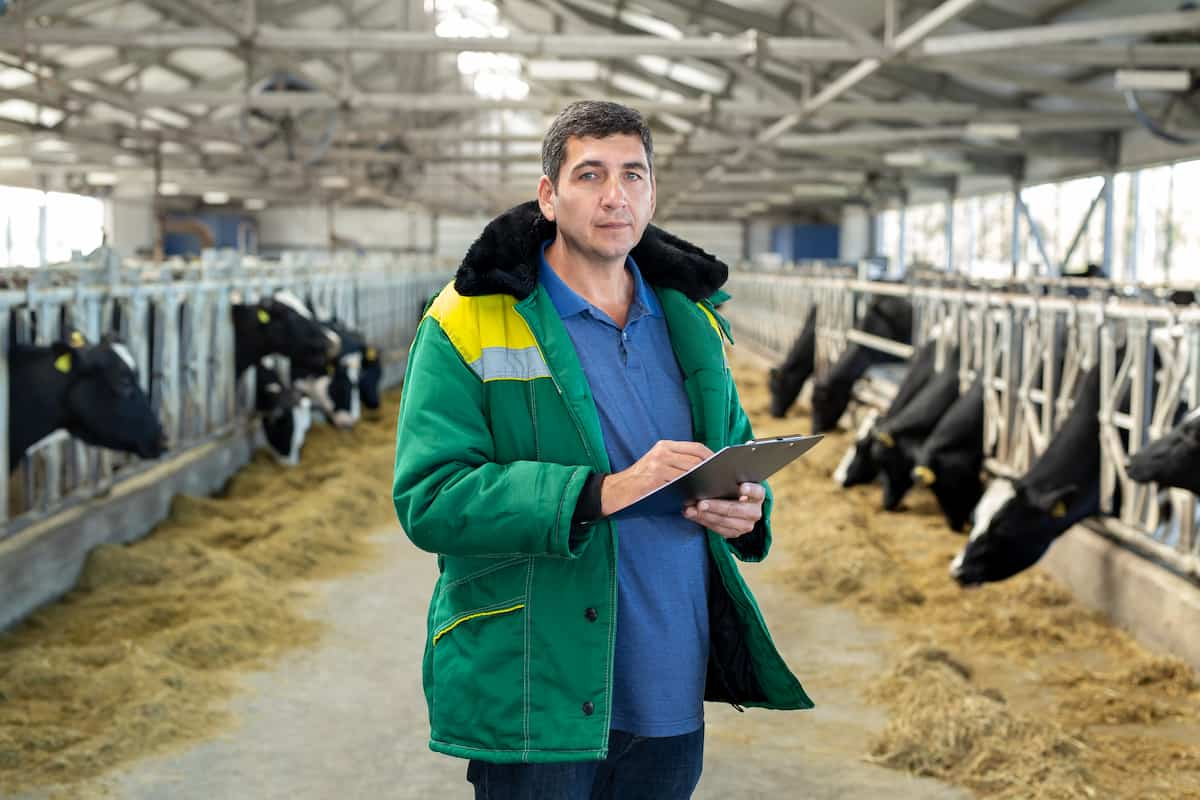Starting a dairy cow farming business can be lucrative for those passionate about agriculture and animal husbandry. However, it requires careful planning and management to ensure the operation’s success. Let us dig into more details.

How to Start Dairy Cow Farming in 10 Steps
Determine the Type of Dairy Farming
The first step to starting dairy farming is to determine the type of dairy farming you want to do. Different types of dairy farming include conventional, organic, and grazing-based. Conventional farming uses modern methods such as high-yielding breeds, feedlots, and artificial insemination, while organic farming relies on natural methods and restricts antibiotics and growth hormones. Grazing-based farming involves letting the cows graze on pastures and is more labor-intensive than conventional farming.
Develop a Business Plan
The next step in starting a dairy farm is to develop a business plan. It will also help you secure financing and investors if necessary. The business plan should include a market analysis, marketing strategy, financial projections, and management plan.
Acquire Land and Facilities
Once you have developed a business plan, the next step is to acquire land and facilities. You will need land for grazing and the construction of barns, milking parlors, and other buildings. The facilities should be designed to meet the cows’ needs, such as providing adequate ventilation, lighting, and space for movement. Additionally, you will need equipment such as tractors, milk tanks, and feeders.
Select the Right Breeds
Choosing the right breeds of cows is essential for a successful dairy farm. Consider the climate and terrain of your area, as well as feed and water availability. Consider factors such as milk production, calving ease, and disease resistance. Popular dairy breeds include Holstein, Jersey, and Brown Swiss.
Hire and Train Staff
Finally, you must hire and train staff to help run the dairy farm. You will need employees to milk the cows, feed them, clean the facilities, and perform other tasks. Ensure adequate training to ensure the staff can handle the job and care for the cows properly. You may also consider hiring a veterinarian to provide regular check-ups and care for sick cows.
Develop a Feeding Plan
Developing a feeding plan is essential to ensure that the cows receive the necessary nutrients for optimal health and milk production. You’ll need to estimate how much hay, silage, and grain, among other types of feed, you’ll need. It’s important to balance the nutrients in the feed to ensure that the cows receive the right amount of protein, energy, and minerals.
In case you missed it: Top 5 Government Pig Farming Subsidy Schemes in India

Obtain Permits and Licenses
A dairy farm cannot begin operations without obtaining the appropriate permissions and licenses from the appropriate authorities. These may include zoning permits, environmental permits, and health permits. You may also need to register your farm with local or state agricultural authorities.
Establish a Marketing Plan
Developing a marketing plan is important to ensure you can sell your milk and dairy products. You must identify potential customers, such as supermarkets, restaurants, or farmers’ markets, and determine how to market your products to them. To increase profits, you may also want to consider value-added products, such as cheese or yogurt.
Implement a Herd Health Program
A herd health program ensures your cows remain healthy and productive. This program should include regular check-ups, vaccinations, disease prevention, and control measures. You may also want to consider implementing a biosecurity plan to prevent the spread of diseases.
Monitor Performance and Adjust
Monitoring the performance of your dairy farm is crucial to ensure its success. You will need to track milk production, feed consumption, and other key metrics to identify areas for improvement. You may need to adjust your feeding plan, herd health program, or other aspects of your operation to optimize performance and profitability.
In case you missed it: Top 5 Government Goat Farming Subsidy Schemes in India

How Much Land is Required for 10 Cow Dairy Farms?
Generally, it is recommended to have at least 2-3 acres of land per cow for a grazing-based system, which would mean a minimum of 20-30 acres for a 10-cow dairy farm. However, if a more intensive feeding and management system is employed, the land requirements may be lower. Consider other factors, such as water availability, infrastructure, and market access when determining the appropriate land size for a dairy farm.
Conclusion
With dedication, hard work, and a commitment to continuous learning and improvement, you can build a thriving business that provides a valuable source of income and contributes to the local community’s food security and economy.
- Feed Your Flock for Less: Top 10 Tips to Save on Chicken Feed
- Ultimate Guide to Ossabaw Island Hog: Breeding, Raising, Diet, and Care
- Hatching Answers: The Top 10 Reasons Your Chickens Aren’t Laying Eggs
- Eggs and Economics: Breaking Down the Cost of Raising Backyard Chickens
- Defend Your Greens: Proven Methods to Keep Iguanas Out of Your Garden
- Ultimate Guide to Cinnamon Queen Chicken: A Comprehensive Guide for Beginners
- Ultimate Guide to California Tan Chicken: Breeding, Raising, Diet, Egg-Production and Care
- Ultimate Guide to Marsh Daisy Chicken: Breeding, Raising, Diet, and Care
- 10 Types of Chicken Farming Businesses You Can Start for Profits